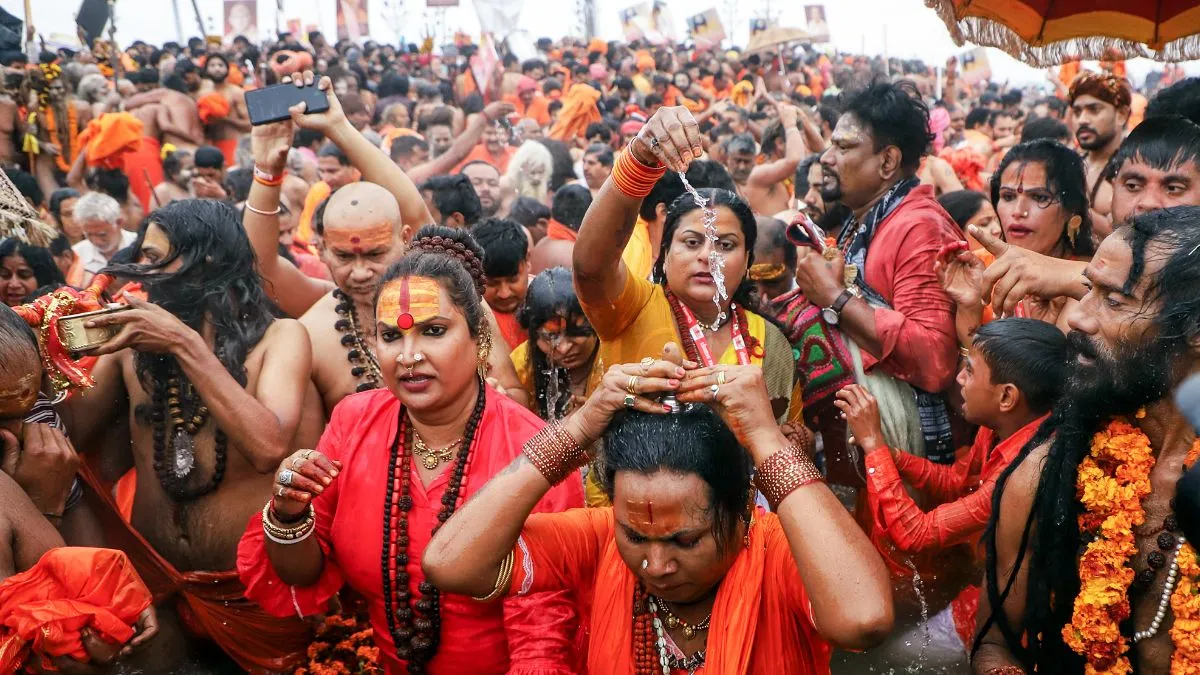Introduction to the Maha Kumbh and Triveni Sangam
The air buzzes with a divine energy as crores of devotees gather at the revered Triveni Sangam, a sacred confluence of three rivers. This gathering marks one of the most anticipated days during the grand Maha Kumbh Mela, where spirituality meets tradition in an awe-inspiring spectacle. As pilgrims prepare for their holy dip on this fourth day, they carry with them centuries-old beliefs and hopes for purification and blessings. The sight is nothing short of mesmerizing; vibrant colors mix with joyful chants echoing through the atmosphere, creating a tapestry woven from faith, devotion, and community spirit. Each year brings new stories to share—stories that connect people across generations in their shared quest for spiritual enlightenment at this cherished site.
Significance of the Fourth Day of Maha Kumbh
The fourth day of Maha Kumbh holds profound significance for devotees. This day is often regarded as a time when the spiritual energy in the atmosphere peaks. Many believe that taking a holy dip on this particular day washes away sins and brings blessings. Over 6 crore devotees have participated on this fourth day.
Devotees flock to Triveni Sangam, where three sacred rivers converge. The confluence symbolizes unity and purity, amplifying the sanctity of the ritual bath.
This auspicious occasion also marks specific astrological alignments deemed favorable for spiritual growth. Faithful pilgrims participate in prayers and rituals designed to deepen their connection with the divine.
As crowds gather at this religious gathering, an electrifying sense of devotion fills the air. Each individual seeks solace, healing, or enlightenment through their participation in these age-old traditions.
History and Tradition of Taking a Holy Dip at Triveni Sangam
The practice of taking a holy dip at Triveni Sangam dates back centuries. This sacred confluence, where the Ganges, Yamuna, and the mythical Saraswati rivers meet, holds immense spiritual significance in Hindu tradition.
Legends suggest that bathing here washes away sins and bestows divine blessings. Many texts reference this ritual as a means to attain Moksha—liberation from the cycle of birth and death.
Traditionally, devotees gather during auspicious days of Maha Kumbh Mela. Each participant aims to connect with their spirituality through the water’s purifying embrace. Some believe that immersing oneself in these waters brings prosperity and happiness.
Families often travel together for this momentous occasion. The sense of community is palpable as chants fill the air and colorful offerings float downstream. Rituals are passed down through generations, making each dip not just an act but a cherished family legacy steeped in devotion.
The Rituals and Offerings Made by Devotees
Devotees at Triveni Sangam engage in various rituals that reflect their deep spiritual connection. Upon arrival, many start by performing a ritual bath, believing it cleanses the soul and purifies the mind.
After the holy dip, offerings are made to deities along the banks of the sacred rivers. Flowers, fruits, and sweets are common gifts symbolizing gratitude and devotion. Some devotees even light lamps as part of their prayers.
Chanting mantras fills the air as pilgrims immerse themselves in this divine atmosphere. Many participate in group prayers or perform havans (fire ceremonies) to seek blessings for health and prosperity.
Connecting with fellow seekers enhances this experience. The camaraderie among participants creates a sense of unity amid personal journeys toward spiritual fulfillment. Each offering carries its unique significance, transforming simple acts into profound expressions of faith during this grand celebration at Kumbh Mela.
Experience of Pilgrims at Triveni Sangam on the Fourth Day
The atmosphere at Triveni Sangam on the fourth day of Maha Kumbh is electric. Devotees flock from across the country, drawn by faith and a deep spiritual yearning.
As they approach the confluence of rivers Ganga, Yamuna, and Saraswati, anticipation fills the air. Many pilgrims can be seen chanting prayers while others immerse themselves in sacred rituals. The holy dip is not just a physical act; it’s an emotional release.
Faces light up with joy as devotees emerge from the waters, believing they’ve washed away sins and received blessings for their journey ahead.
Families share stories amidst laughter and devotion, creating memories that will last a lifetime. Vendors offer traditional snacks and souvenirs nearby, enhancing this vibrant experience.
Pilgrims often describe this moment as transformative—a personal connection to divinity felt in every ripple of water splashed around them. Each visit to Triveni Sangam becomes part of their spiritual tapestry.
Impact of Maha Kumbh on Local Businesses and Economy
The Maha Kumbh Mela is not just a spiritual gathering; its impact resonates throughout the local economy. During this sacred pilgrimage, thousands of devotees flock to Triveni Sangam, and their presence brings a significant boost to various sectors.
Local businesses thrive on the influx of visitors seeking food, accommodation, and souvenirs. Street vendors offer everything from traditional snacks to religious artifacts, catering to the diverse needs of pilgrims. Hotels and guesthouses are often booked solid months in advance as people plan their stay for this monumental event.
Transportation services also see a spike in demand. Rickshaw drivers, taxi services, and even public transport systems are busier than ever as they cater to those traveling to experience the holy dip at Triveni Sangam.
Moreover, artisans get an opportunity to showcase their crafts—making it a vibrant hub for cultural exchange. The economic benefits extend beyond immediate profits; they contribute significantly towards developing infrastructure that will benefit these regions long after the Kumbh ends.
This convergence of spirituality and commerce creates a unique atmosphere where tradition meets modernity—a reflection of India’s rich culture during one of its most revered festivals.






